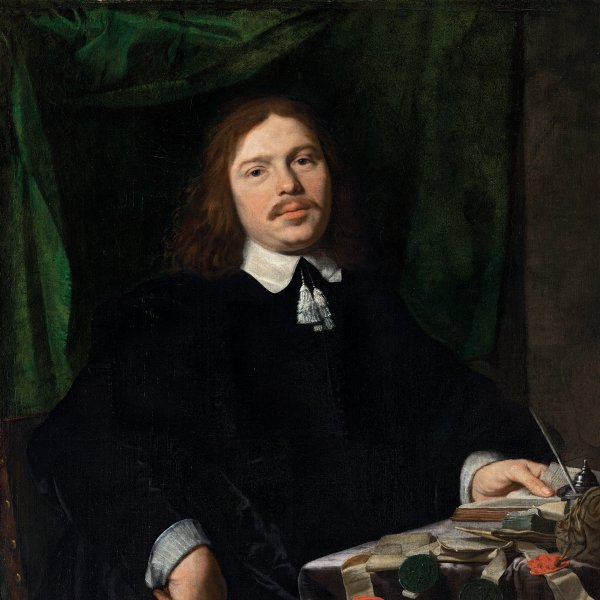Bartholomeus van der Helst
Haarlem, ca. 1613-Amsterdam, 1670
Bartholomeus van der Helst was born in Haarlem in 1613. He moved to Amsterdam around 1627 where he probably trained in the workshop of Nicolaes Eliasz. Pickenoy. Van der Helst married Anna du Pire in 1636. His first known work, The Regents of the Walloon Orphanage (Maison Decartes, Amsterdam) of 1637 reveals the marked influence of his master on his early style. Van der Helst achieved success at an early date and in 1639 received the prestigious commission to paint a large group portrait of The Civic Guard Company of Captain Roelof Bicker and Lieutenant Jan Michielsz. Blaeuw (Rijksmuseum, Amsterdam), for the same series as The Night Watch by Rembrandt. The completion of that work in 1643 saw Van der Helst’s reputation completely established and he succeeded Rembrandt as the portraitist to Amsterdam’s wealthy classes.
From 1642 until 1670 Van der Helst received numerous commissions for individual portraits. His technique became smoother and the depiction of clothes and accessories increasingly detailed. His second group portrait, The Celebration of the Peace of Munster at the Crossbowmen’s Guild (Rijksmuseum, Amsterdam), marks the culmination of his technical evolution, and the smooth handling of the brush and fine modelling of the figures evident in this work continued to prevail in all his later works. Van der Helst received important commissions from patrons outside Amsterdam. In 1652 he executed the official portrait of Maria Henrietta Stuart (Rijksmuseum, Amsterdam), widow of William II of Orange Nassau. In addition to portraits, Van der Helst painted genre scenes and biblical and mythological subjects.
Little is known of the artist’s activities as a teacher, although his son Lodewijk seems to have trained in his studio. Van der Helst’s style had a significant influence on his contemporaries, and his most important followers include Abraham van den Tempel, Nicolaas van Helt Stocade, and Paulus Hennekyn.
From 1642 until 1670 Van der Helst received numerous commissions for individual portraits. His technique became smoother and the depiction of clothes and accessories increasingly detailed. His second group portrait, The Celebration of the Peace of Munster at the Crossbowmen’s Guild (Rijksmuseum, Amsterdam), marks the culmination of his technical evolution, and the smooth handling of the brush and fine modelling of the figures evident in this work continued to prevail in all his later works. Van der Helst received important commissions from patrons outside Amsterdam. In 1652 he executed the official portrait of Maria Henrietta Stuart (Rijksmuseum, Amsterdam), widow of William II of Orange Nassau. In addition to portraits, Van der Helst painted genre scenes and biblical and mythological subjects.
Little is known of the artist’s activities as a teacher, although his son Lodewijk seems to have trained in his studio. Van der Helst’s style had a significant influence on his contemporaries, and his most important followers include Abraham van den Tempel, Nicolaas van Helt Stocade, and Paulus Hennekyn.





